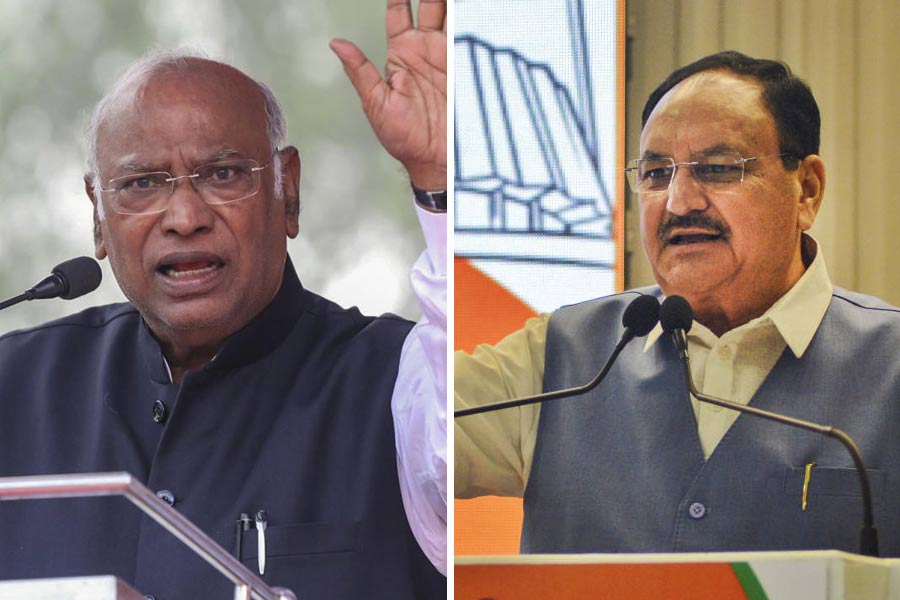India’s space agency on Monday launched the Chandrayaan-2 spacecraft into an orbit around Earth and a 48-day journey towards the lunar south pole, intending to make India the fourth country to reach the Moon.
A giant rocket — the Geosynchronous Satellite Launch Vehicle Mark III — lifted off with a thunderous roar from the Sriharikota island spaceport at 2.43pm, spewing white-orange flames and vanishing into clouds. It delivered the spacecraft into an orbit around Earth about 16 minutes later.
Indian Space Research Organisation (Isro) engineers will over the next four weeks fire rocket thrusters aboard Chandrayaan-2 several times to nudge the spacecraft into higher and higher orbits for a planned landing on the Moon around September 7.
“Today is a historic day for space science and technology in India,” Isro chairperson Kailasavadivoo Sivan said, seconds after engineers at Isro’s satellite telemetry tracking and command centre in Bangalore took control of the spacecraft.
“(This) is the beginning of a historic journey to land at a place near the (lunar) south pole to explore the unexplored,” Sivan said.
Chandrayaan-2 is intended to be the first spacecraft to land near the Moon’s south pole, a region of special interest to lunar scientists.
Isro had called off Chandrayaan-2’s originally scheduled lift-off on July 15, only about 56 minutes before the launch, after its engineers spotted unexpected pressure readings in the launch vehicle. The space agency has not revealed details of what held the launch back but has described it as a technical snag.
“Team Isro worked out, fixed, and corrected the snag within 24 hours,” Sivan said. “For the next one-and-a-half days, the required tests were conducted to ensure that the corrections made were proper.”
At their monitoring stations at the Satish Dhawan Space Centre, Sriharikota, Isro engineers tracked the rocket during its 974-second flight, relying on signals from the rocket and “selfie” snapshots from strategically placed onboard cameras.
Chandrayaan-2 is currently going around Earth in an elliptical orbit, its nearest point to Earth being 169km and its farthest point, about 45,475km. In the coming days, Isro engineers will execute critical orbit-raising manoeuvres to raise the orbit in steps and place the spacecraft into a “lunar transfer trajectory” that will take it close to the Moon.
Sivan said the GSLV Mark III had successfully injected the spacecraft into an orbit about 6,000km higher than the intended orbit. He described this as a bonus for the spacecraft control team that is planning the orbit-raising operations.
The three-in-one spacecraft has a 2,369kg orbiter, a 1,477kg lander and a 26kg rover, each carrying science payloads or instruments for studies of the Moon’s surface and exosphere. The orbiter has eight payloads, the lander has three, and the rover has two.
Only three countries — the former Soviet Union, the United States and China — have so far explored the Moon through spacecraft that soft-landed on the lunar surface. European and Japanese space agencies have studied the Moon through orbiters, like Isro’s Chandrayaan-1 orbiter did in 2008.
India’s lunar lander mission, which has cost about Rs 978 crore — Rs 603 crore for the spacecraft and Rs 375 crore for the rocket — will seek to map and study the lunar terrain, minerals and dust and search for signatures of water ice on the Moon.
The successful launch evoked congratulatory messages from Prime Minister Narendra Modi and other political leaders.
“The launch of Chandrayaan2 illustrates the prowess of our scientists and the determination of 130 crore Indians to scale new frontiers in science,” Modi tweeted. “Efforts such as Chandrayaan2 will further encourage our bright youngsters towards science, top quality research and innovation.”
Defence minister Rajnath Singh too used Twitter to congratulate Isro for the “flawless” launch.
Chandrayaan-2’s lander, Vikram, carries a six-wheeled rover, Pragyan. Both are crammed with instruments designed to measure the lunar surface temperature, look for any lunar seismic activity, and determine the abundance of elements around the landing site.
The sensors aboard Chandrayaan-1 had helped detect signatures of water molecules, but the extent to which such molecules are distributed on the lunar surface, below the surface, and in the lunar exosphere remains unclear.
Pragyan, powered by a 50W solar power source, can travel up to 500m at a speed of 1cm per second. The orbiter payloads include a high-resolution camera that will help ensure the lander’s safe landing away from craters, and a radar that will estimate water ice, if any, near the lunar polar regions.
The orbiter has a planned lifetime of one year, while the lander and the rover are expected to remain functional for 14 days, or one period of lunar daylight.











